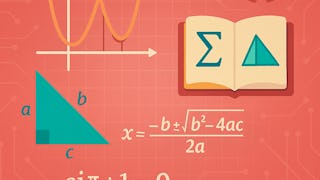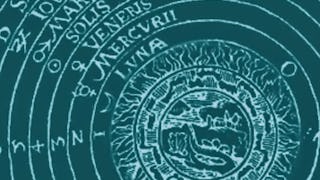Learn the mathematics behind the Fibonacci numbers, the golden ratio, and their relationship to each other. These topics may not be taught as part of a typical math curriculum, but they contain many fascinating results that are still accessible to an advanced high school student.

Ends in 3 days. Heat up your career with 40% off courses from Adobe, IBM, and more. Save now.


Fibonacci Numbers and the Golden Ratio

Instructor: Jeffrey R. Chasnov
Top Instructor
40,767 already enrolled
Included with 
(1,179 reviews)
Recommended experience
What you'll learn
Fibonacci sequence and its relationship to the golden ratio
Fibonacci Q-matrix, Cassini's identity, sums of Fibonacci numbers
Golden rectangle, golden spiral, Fibonacci spiral
Continued fractions, golden angle, the most irrational number, and the Fibonacci numbers in nature
Skills you'll gain
Details to know

Add to your LinkedIn profile
10 assignments
See how employees at top companies are mastering in-demand skills

There are 3 modules in this course
We learn about the Fibonacci numbers, the golden ratio, and their relationship. We derive the celebrated Binet's formula, which gives an explicit formula for the Fibonacci numbers in terms of powers of the golden ratio and its reciprocal. This formula can be used to calculate the nth Fibonacci number without having to sum the preceding terms in the sequence.
What's included
6 videos8 readings4 assignments
We learn about the Fibonacci Q-matrix and Cassini's identity. Cassini's identity is the basis for the famous dissection fallacy, the Fibonacci bamboozlement. A dissection fallacy is an apparent paradox arising from two arrangements of different area from one set of puzzle pieces. We also derive formulas for the sum of the first n Fibonacci numbers, and the sum of the first n Fibonacci numbers squared. Finally, we show how to construct a golden rectangle, and how this leads to the beautiful image of spiraling squares. This image is a drawing of a sequence of squares, each with side lengths equal to the golden ratio conjugate raised to an integer power, creating a visually appealing and mathematically intriguing pattern.
What's included
9 videos10 readings3 assignments
We learn about the golden spiral and the Fibonacci spiral. Because of the relationship between the Fibonacci numbers and the golden ratio, the Fibonacci spiral eventually converges to the golden spiral. You will recognize the Fibonacci spiral because it is the icon of our course. We next learn about continued fractions. To construct a continued fraction is to construct a sequence of rational numbers that converges to a target irrational number. The golden ratio is the irrational number whose continued fraction converges the slowest. We say that the golden ratio is the irrational number that is the most difficult to approximate by a rational number, or that the golden ratio is the most irrational of the irrational numbers. We then define the golden angle, which is related to the golden ratio, and use it to model the growth of a sunflower head. The use of the golden angle in the model allows a fine packing of the florets, and results in the unexpected appearance of the Fibonacci numbers in the sunflower.
What's included
8 videos8 readings3 assignments
Earn a career certificate
Add this credential to your LinkedIn profile, resume, or CV. Share it on social media and in your performance review.
Instructor

Top Instructor
Explore more from Math and Logic


Birla Institute of Technology & Science, Pilani
 Status: Free Trial
Status: Free Trial
Dartmouth College
 Status: Free Trial
Status: Free Trial
Johns Hopkins University
 Status: Free Trial
Status: Free Trial
Johns Hopkins University
Why people choose Coursera for their career




Learner reviews
1,179 reviews
- 5 stars
82.57%
- 4 stars
14.80%
- 3 stars
2.03%
- 2 stars
0.50%
- 1 star
0.08%
Showing 3 of 1179
Reviewed on Feb 13, 2021
Very neat and well organized, all material at hand. I liked the skipped math bits that the others mentioned, so that I could myself engage in figuring out.
Reviewed on Jul 18, 2020
Took me awhile to get in the groove — age 76 — but the little gray cells made the grade. Thank you for a well-organized, clearly presented course.
Reviewed on Mar 22, 2019
Absolutely loved the content discussed in this course! It was challenging but totally worth the effort. Seeing how numbers, patterns and functions pop up in nature was a real eye opener.

Open new doors with Coursera Plus
Unlimited access to 10,000+ world-class courses, hands-on projects, and job-ready certificate programs - all included in your subscription
Advance your career with an online degree
Earn a degree from world-class universities - 100% online
Join over 3,400 global companies that choose Coursera for Business
Upskill your employees to excel in the digital economy
Frequently asked questions
Access to lectures and assignments depends on your type of enrollment. If you take a course in audit mode, you will be able to see most course materials for free. To access graded assignments and to earn a Certificate, you will need to purchase the Certificate experience, during or after your audit. If you don't see the audit option:
The course may not offer an audit option. You can try a Free Trial instead, or apply for Financial Aid.
The course may offer 'Full Course, No Certificate' instead. This option lets you see all course materials, submit required assessments, and get a final grade. This also means that you will not be able to purchase a Certificate experience.
When you purchase a Certificate you get access to all course materials, including graded assignments. Upon completing the course, your electronic Certificate will be added to your Accomplishments page - from there, you can print your Certificate or add it to your LinkedIn profile. If you only want to read and view the course content, you can audit the course for free.
You will be eligible for a full refund until two weeks after your payment date, or (for courses that have just launched) until two weeks after the first session of the course begins, whichever is later. You cannot receive a refund once you’ve earned a Course Certificate, even if you complete the course within the two-week refund period. See our full refund policy.
More questions
Financial aid available,

